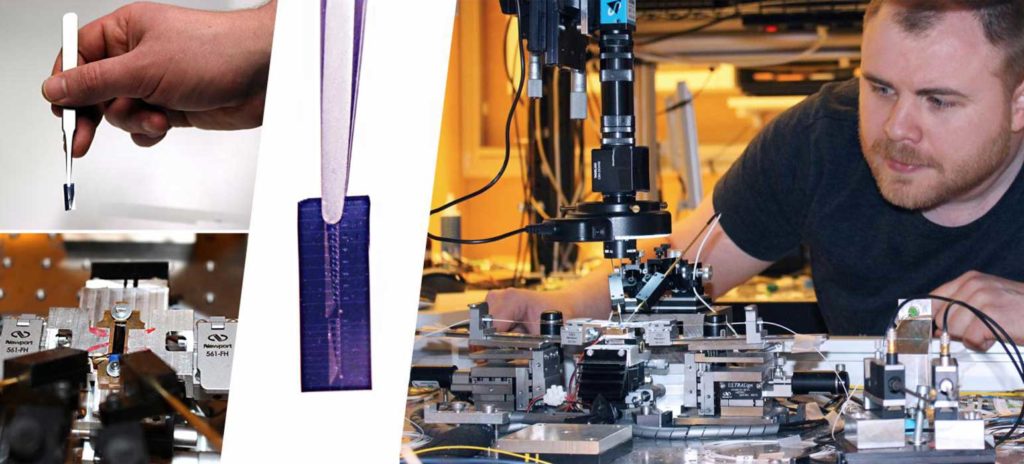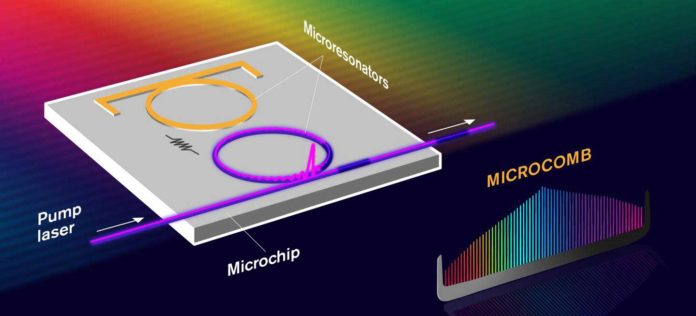Scientists from the Chalmers University of Technology have come up with a microcomb that is coherent, tunable, and reproducible. A microcomb is a photonic device capable of generating a myriad of optical frequencies – colors – on a tiny cavity known as a microresonator.
This newly developed microcomb is based on two microresonators and could potentially bring advanced applications closer to reality. Placed on a chip, the device is small enough to fit on the end of human hair.
However, this is not the first time that scientists have developed a microcomb on a chip. But, Chalmers’ scientists have developed a method that can address several well-known limitations in the field.
Microcombs can be used in various fields: to radically decrease the power consumption in optical communication systems, in lidar for autonomous driving vehicles, for measuring distances, and for the calibration of the spectrographs used in astronomical observatories devoted to the discovery of Earth-like exoplanets.

Victor Torres Company, who leads the research project at Chalmers, said, “For the technology to be practical and find its use outside the lab, we need to co-integrate additional elements with the microresonators, such as lasers, modulators, and control electronics. This is a huge challenge that requires maybe 5-10 years and an investment in engineering research. But I am convinced that it will happen.”
“The most interesting advances and applications are the ones that we have not even conceived of yet. This will likely be enabled by the possibility of having multiple microcombs on the same chip. What could we achieve with tens of microcombs that we cannot do with one?”
Journal Reference
- Helgason, Ó.B., Arteaga-Sierra, F.R., Ye, Z. et al. Dissipative solitons in photonic molecules. Nat. Photonics (2021). DOI: 10.1038/s41566-020-00757-9
